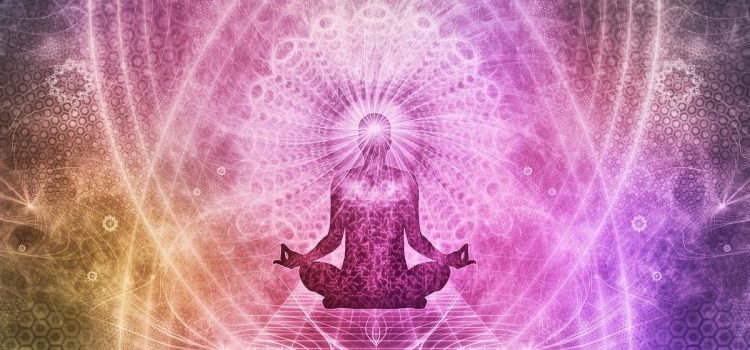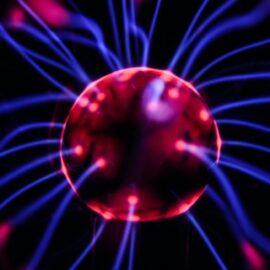

This article is an excerpt from the Shortform book guide to "Stealing Fire" by Steven Kotler and Jamie Wheal. Shortform has the world's best summaries and analyses of books you should be reading.
Like this article? Sign up for a free trial here.
Want to know how to access altered states of consciousness? What are some evidence-based methods for reaching a higher consciousness?
In Stealing Fire, Stephen Kotler and Jamie Wheal explain how to access altered states of consciousness and why reaching a higher consciousness is important for personal growth. They claim that scientific advances have now made it easier and safer to reach a higher consciousness.
Read on to learn how to access altered states of consciousness, according to Kotler and Wheal.
How to Access Altered States of Consciousness
For much of human history, various cultures have explored how to access altered states of consciousness. In Stephen Kotler and Jamie Wheal’s book Stealing Fire, they explore how to access what they call “peak states” (or higher states of consciousness), which they say has become easier, safer, and more legitimate as various scientific advances have demystified what was once obscure and taboo.
According to the authors, various scientific advances now enable us to clear the fog around peak state experiences, which were long held to be mystical and unscientific. We’ve begun to establish evidence-based accounts of peak states, and the authors suggest that as a result, more people will be able to access the profound benefits of peak states to vastly improve their lives.
In this article, we’ll explain how to access altered states of consciousness, according to two methods in Kotler and Wheal’s book.
#1: Pharmacology
With neuroscience research revealing how the brain works during peak state experiences, we now know how to scientifically and precisely access altered states of consciousness. According to the authors, one of the best ways to do so is with intoxicating substances such as LSD, psilocybin, and other psychoactive molecules. Further, they argue that recent advances in chemistry and pharmacology will soon make it possible to produce these substances at home and share their recipes over the internet.
For most of history, however, people only had access to the substances that both grew in their locale and were culturally sanctioned. Crucially, the authors explain, this limited the range of peak experiences people could have. Today, though, we have access to a much wider range of substances in order to help us access altered states of consciousness. Since the mid-twentieth century, independent chemists and pharmacologists have developed recipes and written books to enable people to create psychoactive substances at home. Further, they fought to open-source this knowledge and resisted government efforts to make psychedelics illegal.
As a result, to access altered states of consciousness, today anyone can go online and research how to synthesize LSD or grow psilocybin mushrooms right in their living rooms. To make things even easier, advances in 3D printing and synthetic biology have begun to produce molecules from simple household ingredients such as vegetable oil and starch. The authors argue that you’ll soon be able to produce various psychedelic molecules at home with nothing more than a 3D printer and a recipe downloaded from the internet.
| Machine Learning Meets Molecular 3D Printing Just a few years on from Stealing Fire’s publication, the authors’ above predictions seem to be edging closer to reality. Multiple research teams have made recent strides in successfully developing technologies to 3D-print pharmaceuticals. In 2020, a team of researchers from Germany released a paper on progress they’d made in developing an AI-assisted molecular 3D-printer. Their key challenge was to devise a way to properly bond molecules, and they’ve used machine learning to develop a computer intelligence that can try, err, and learn how to do so. Specifically, the researchers have thus far trained the software to target and break specific, nanoscale molecular bonds without affecting adjacent molecules. In time, this may make it possible to 3D print various molecules, including pharmaceutical drugs, at home. Meanwhile, Canadian biotech company Biomind Labs announced in 2021 that they’d successfully designed a 3D-printable pharmaceutical that incorporated printed psychedelic molecules. This may be the first instance of a successful delivery on the dream the authors describe above. |
Additionally, the authors say that research has begun to validate the use of these substances. Researchers have found that hallucinogenic molecules produce similar effects to advanced states of meditation or spiritual practice. Thus, they can yield the same profoundly meaningful experiences found in other types of peak states.
With this validation and the ability to homebrew psychedelic substances, people have come together in online communities of “psychonaut” explorers. Gray net sites such as Erowid gather trip reports, how-to information, and crowd-sourced efforts to make sense of the psychedelic experience.
(Shortform note: If you’re looking to access altered states of consciousness, before jumping into your own pharmacological explorations, note that many psychedelic substances still occupy a legal gray area. Cultivation of psilocybin mushrooms remains illegal in most U.S. states, though possession of spores is not strictly illegal. LSD remains classified as a Schedule I controlled substance in the U.S., which means it is illegal to possess, buy, sell, or create in any way. Beyond the U.S., many countries around the world adhere to the 1971 UN Convention on Psychotropic Substances, which also classifies psilocybin and LSD as illegal.)
#2: Technology
If you want to access altered states of consciousness—namely, through psychedelics and extreme sports (such as skiing, freeclimbing, big-wave surfing, and skydiving)—most routes remain risky, and some people have lost their minds and their lives pursuing these peak states. However, the authors argue, new technologies are making peak states safer and easier to access for larger and larger groups of people.
To reduce the danger of accessing altered states of consciousness, for instance, by flying down alpine slopes on racing skis, entrepreneurs have begun to create safer alternatives that simulate the same experience. For example, indoor skydiving tunnels mimic the high of jumping from an airplane. In addition, entrepreneurs, including the authors, have begun to create “gyms” outfitted with biofeedback tech and other apparatuses designed to induce flow in a safe manner. With technologies such as giant swings, sensory deprivation tanks, and heartbeat and brainwave monitors, people can safely and reliably find peak states.
(Shortform note: While the new, safer technologies described by the authors seem effective in theory, not everyone agrees that they’re a good substitute for the real thing. Instead, for instance, skydivers have found that indoor skydiving is a good way to train but can’t measure up to the real experience. Meanwhile, Red Bull has begun experimenting with virtual reality as a way to find the middle ground between overly safe, gym-based experiences and the real thing. With just a VR headset, users can try real-feeling cliff-jumping, skydiving, and helicopter flying.)
These states aren’t only safer—they’re also becoming more accessible to large groups. Leading technicians have designed speaker systems, deployed at festivals such as Burning Man, that catalyze group flow states. Further, the authors explain, visionary artists from the same Burning Man coterie have begun to create massive-scale art productions that overwhelm the senses and create a sense of collective awe that dissolves the self. In both cases, researchers have found that such experiences affect the brain similarly to other routes into altered states of consciousness.
(Shortform note: As the authors describe, these experiences are in theory safer and more accessible. However, these specialized facilities and awe-inducing art experiences aren’t exactly accessible to all. Consider Burning Man: Regular tickets cost around $400 and sell out quickly, while additional expenses include travel, hauling your own food and water, optional membership in a larger camp, vehicle rental, and so on. Altogether, you could pay upward of a few thousand dollars for the eight-day experience—quite a lot if you simply want to try out group flow and encounter large-scale art productions. Meanwhile, high-end biotech gyms, such as Mindgym, appear to serve mainly large, wealthy corporate teams.)

———End of Preview———
Like what you just read? Read the rest of the world's best book summary and analysis of Steven Kotler and Jamie Wheal's "Stealing Fire" at Shortform.
Here's what you'll find in our full Stealing Fire summary:
- A modern revolution in the understanding of peak states of consciousness
- The key benefits of accessing peak states
- How some are turning to LSD and other substances to reach a peak state






